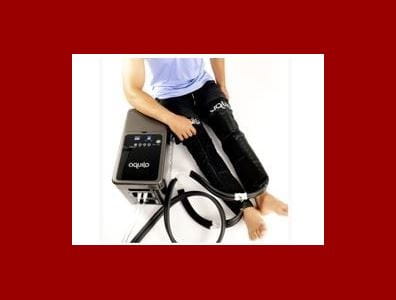Cardiovascular and kinesiology researchers at Indiana University and Purdue University are examining whether a home-based leg heat therapy under development can improve skeletal muscle function and physical endurance in patients with heart failure with preserved ejection fraction, or HFpEF.
HFpEF occurs when the left ventricle muscle becomes stiff and can’t relax and fill blood properly between each heartbeat. When diagnosed with HFpEF, the heart squeeze works normally but heart relaxation is impaired.
Researchers at Indiana University School of Medicine, in cooperation with Indiana University Health, are now enrolling participants for a pilot study testing the leg heat therapy, for adults over 18 who have a clinical diagnosis of HFpEF.
According to the National Library of Medicine, an estimated 6.7 million Americans over the age of 25 are living with heart failure, half of whom may have been diagnosed with HFpEF. Risk factors for HFpEF include high blood pressure, obesity, atrial fibrillation, diabetes, coronary artery disease, pulmonary hypertension, smoking, chronic kidney disease and advanced age over 70. Women also have a higher risk of developing the disease.
 “People with HFpEF often experience skeletal muscle weakness and an impaired physical capacity, which contribute to reduced quality of life and a pathway toward a poor prognosis,” said Principal Investigator Onyedika Ilonze, MD, assistant professor of clinical medicine at the IU School of Medicine and an investigator at the school’s Krannert Cardiovascular Research Center. “Our hypothesis is that heat therapy will lead to improvements in skeletal muscle and microvascular blood flow as well as oxygenation.”
“People with HFpEF often experience skeletal muscle weakness and an impaired physical capacity, which contribute to reduced quality of life and a pathway toward a poor prognosis,” said Principal Investigator Onyedika Ilonze, MD, assistant professor of clinical medicine at the IU School of Medicine and an investigator at the school’s Krannert Cardiovascular Research Center. “Our hypothesis is that heat therapy will lead to improvements in skeletal muscle and microvascular blood flow as well as oxygenation.”
Preliminary studies showed impaired muscle microvascular blood flow and oxygenation and identified the capillary vascular network as a potential therapeutic target to treat HFpEF. Data also illustrated impairments in the nitric oxide pathway in HFpEF reduce muscle microvascular blood flow and oxygenation, which contributes to premature fatigue.
“We see potential therapies that aim to restore nitric oxide levels as an attractive, potential target to improve muscle microvascular function, which could improve heart and physical function in these HFpEF patients,” Ilonze added.
The randomized, double-blind, controlled study, NCT06388226, will enroll 124 participants with HFpEF to investigate the effects of a home-based leg heat therapy for eight weeks. Each person in the study will be required to apply the heat therapy daily for 90 minutes using water-circulating trousers perfused with either water heated at 42° C or 33° C. Participants enrolled in the study will also need to attend five laboratory visits. Outcomes of participation include assessments of quality of life, leg muscle structure and function and potential improvements in physical capacity evaluated via treadmill exercise testing. This research is funded by the American Heart Association and the National Institutes of Health.
“These water-circulating trousers are inspired by pants worn by astronauts to regulate their temperature in space,” said research collaborator Daniel M. Hirai, PhD, an assistant professor at Purdue’s Department of Health and Kinesiology. “The aim is to develop non-invasive rehabilitation remedies that are practical and safe for use in a home setting. This approach can be particularly appealing to individuals who are unable to participate in other treatment modalities, such as standard exercise routines.”
This study is among several cardiovascular clinical trials conducted by IU researchers and clinicians. People who are interested in learning more about the study may email cardtrls@iu.edu.
